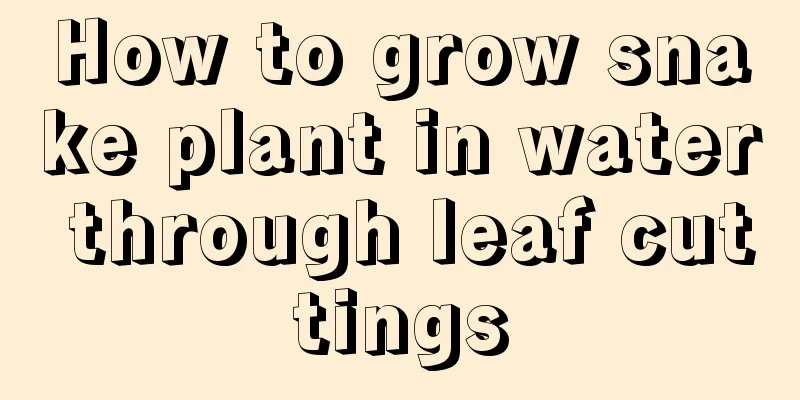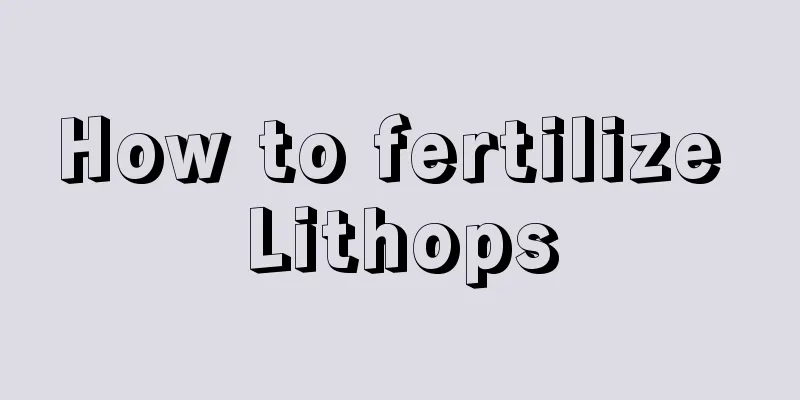A must-see for newbies! 4 taboos of orchid cultivation, you will lose a lot if you don't know them

Don't plant small plants in large potsSome flower lovers think that using a larger flowerpot can hold more materials and provide more nutrients. Isn’t this a good thing? Actually, it is not. It is difficult to control watering for small plants in large flowerpots. If you don’t water enough, the soil will be wet on the outside and dry on the inside. When you find that the soil in the flowerpot is dry, it is very likely that the outside is dry but the inside is still wet. If you continue to water it, it will cause the inside to be wet for a long time, and the roots will not be able to absorb nutrients normally, which may even cause root rot in severe cases. Solution: To determine what kind of pot is more suitable for planting, you can put the plant in the pot and compare it. If you find that the pot is slightly larger than the root space of the plant, then the pot should be fine. Irregular wateringWhen you first start growing orchids, one of the most difficult issues to master is watering. Some people love flowers so much that they want to water them when they see them. They tend to give them too much water, which can easily cause the flowers to die from overwatering. For orchids, it is better to water less rather than more. If you water too little, the plant will only lose vitality and can be saved. If you water too much, it will rot and die directly. OverfertilizationAdequate fertilizer can promote the growth, development and flowering of orchids, but the absorption of fertilizer also requires the cooperation of light and humidity. Plants also have a certain degree of absorption of fertilizer, and the more you give, the better. Applying too much fertilizer can easily cause the orchid leaves to dry out and turn yellow, and in severe cases, it can lead to the death of the plant. Therefore, when flower lovers apply fertilizer, they must follow the principle of applying small amounts of fertilizer frequently. Planted too deepPlanting orchids too deeply is a common mistake made by many novice orchid growers. In fact, this can easily lead to root rot and bud rot. The correct way is to expose the head of the orchid plant to the outside, which can promote the healthy growth of the plant. If the newly planted orchid is unstable, you can use a bracket to fix it. (Note: The pictures are from the Internet, and the copyright belongs to the original author. Due to conditions, the source of some pictures cannot be found and the author is not marked. If your rights are infringed, please contact Huahua WeChat qdxixixixixi or QQ1273160598 for deletion or copyright payment.) |
<<: 50 kinds of foliage plants, each one is more beautiful than the other
Recommend
How to grow the rubber tree well?
Known for its vigorous vitality, the Brazilian wo...
How to grow guava
1. Maintenance methods 1. Temperature: Its habits...
Toona sinensis planting time and method
The young shoots and leaves of Chinese toon are c...
What are the effects and functions of aloe vera? Can aloe vera be applied directly on the face?
1. Efficacy and Function 1. Beauty and skin care:...
How to grow peach blossoms in winter
1. The importance of winter maintenance Generally...
The Feng Shui Effect of Brazilian Iron
The symbolic meaning of Brazilian iron The symbol...
How to grow green radish
1. Breeding methods Chlorophytum cochinchinensis ...
Gyokuro Varieties
Large Window Jade Dew It is a hybrid variety of J...
Is Olivia succulent resistant to freezing?
1. Is it frost-resistant? Olivia prefers cool cli...
Ranunculus four seasons maintenance method
Spring care methods for ranunculus Suitable for a...
What soil is best for growing red bud maple (bonsai cultivation method for red bud maple)
What kind of soil is suitable for planting red bu...
How to propagate Gem Flower and what to pay attention to
Gem flower reproduction method The main ways of p...
What should I do if the petunia doesn’t bloom? How to make Verbena bloom all year round?
Reasons why Verbena does not bloom If a plant doe...
Pests and diseases of white flower and their control methods
Common diseases of white flower tenacity: anthrac...
How to cultivate Huang Changshan
1. Soil: Huangchangshan has a strong ability to a...









